 took half a day off work yesterday to take some pictures of the Sun. Unfortunately,
the Moon was in the way, ruining all my shots. It's always something.
took half a day off work yesterday to take some pictures of the Sun. Unfortunately,
the Moon was in the way, ruining all my shots. It's always something.
1:15 pm: Eclipse starting. Temperature 27.84C in the shade. Set camera to take pictures using an ultraviolet filter (Baader U-filter), which accentuates the sunspots. Haze making the images fuzzy. Switched to cell phone.
1:45 pm: Wind picking up. Temperature 28.61 in the shade, 31.47 in the sunlight. Some haze. Great pictures of clouds!

From Hell's heart I stab at thee . . . with my cell phone
2:10 pm: Still more clouds. Temperature 26.79C in the shade. Eclipse visible. Cell phone picture shows eclipse as it might look in hell.
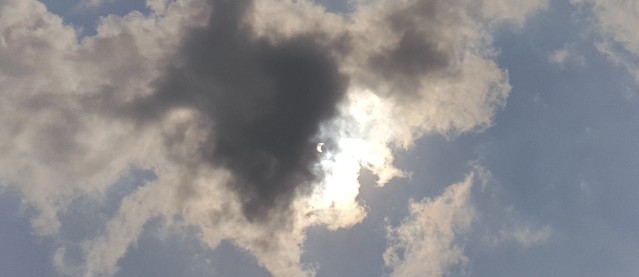
The eclipse viewed from a cell phone
2:24 pm: Temperature 26.15C, but nothing to do with the eclipse. Eclipse visible. Cell phone giving better results than a DSLR. Worried about getting rained on. Some really cool clouds. No worries about the cell phone camera sensor being burned out today.
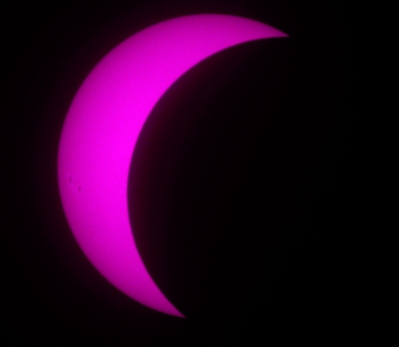
Eclipse in near-ultraviolet showing faint sunspots
2:35 pm: Clouds finally disappearing. Eclipse at the peak. Temperature 25.13. Landscape has an eerie appearance, as if I'm way up north. A photo wouldn't do it justice. It looks the same to the technological eye, just as a picture taken under the moonlight looks like ordinary daylight to the camera.
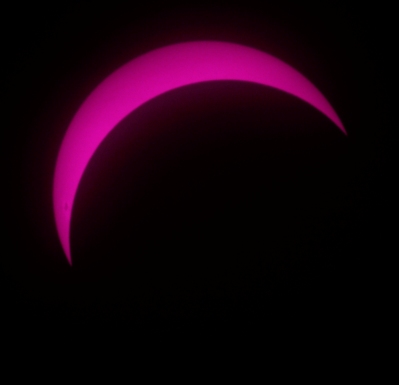
Eclipse in near-ultraviolet
2:42 pm: Maximum eclipse. U-filter still fuzzy. Switching to H-alpha filter. Temperature 25.10. Everyone talks about how the birds stop tweeting. Nobody says anything about all the mosquitoes. They're crepuscular, which means they only come out at dawn and dusk . . . and during an eclipse.
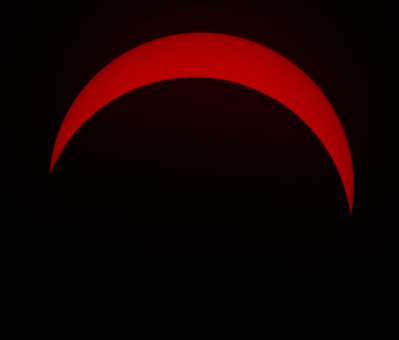
Eclipse in H-alpha. The Hα line at 6562.8 A is caused by radiative recombination of hydrogen atoms.
2:52 pm: Temperature 25.02. Blue jays going crazy. They've just discovered the mosquitoes. Sunspots becoming visible again. H-alpha filter is much sharper than ultraviolet.
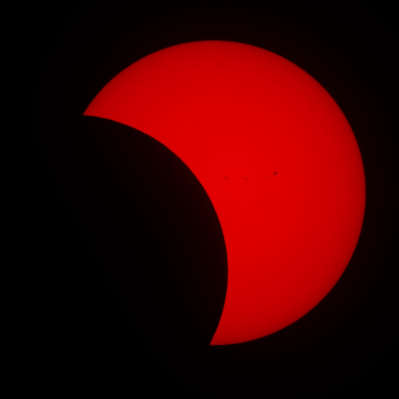
Eclipse in H-alpha showing sunspots
3:01 pm: Temperature 25.87. Blue jays have quieted down. Mosquitoes going away. Now we have wasps. Wasps everywhere.
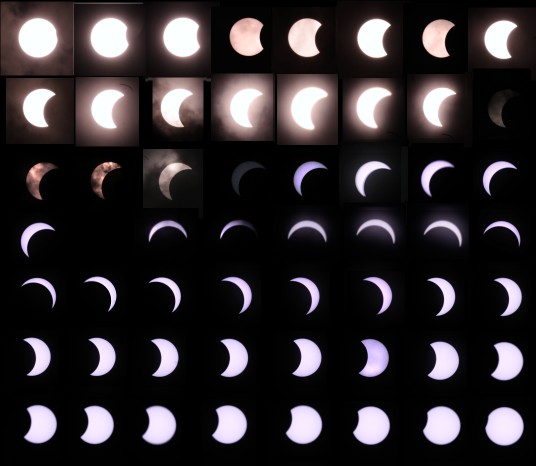
Composite image taken with R-72 infrared filter, which turns the sky black. Sunspots are barely visible in near-infrared.
3:42 pm: Temperature 29.21 in the shade. Temperature 43.09 in the sun. Eclipse is over. Nice and sunny now.
Note: an earlier version of this page had all the H-alpha images in Jpeg format. These have been replaced with PNG images.
aug 22, 2017; last edited aug 22, 2017, 9:03 pm

